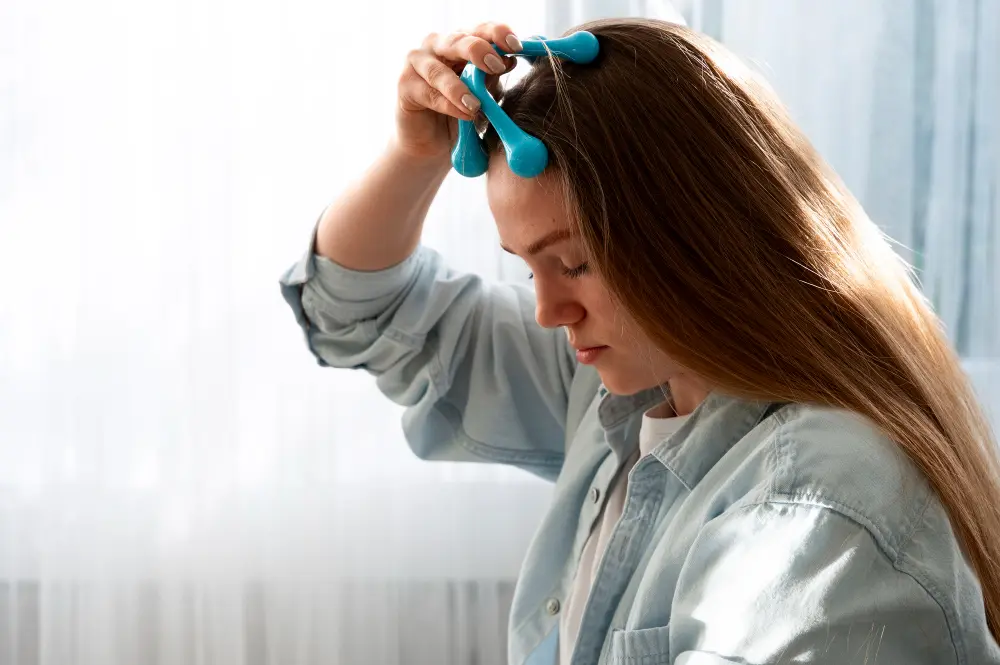Magnetic therapy for depression involves the use of magnets to alleviate symptoms of depression. This alternative treatment is believed to offer benefits such as improved mood and reduced feelings of sadness. However, some individuals may experience side effects such as headaches or dizziness. Before considering magnetic therapy for depression, it is important to consult with a healthcare professional to discuss potential risks and benefits. Additionally, individuals should be aware of the varying research findings regarding the effectiveness of this therapy for managing depression.
What is Magnetic Therapy?
Magnetic therapy uses focused magnetic fields to stimulate specific areas of the brain associated with mood regulation. The most common form used for depression is TMS.
Unlike medications, which affect the whole body, TMS targets only the part of the brain responsible for depression, making it a great option for those who experience side effects from antidepressants.
Benefits of Magnetic Therapy for Depression
It is Drug-free and approve by FDA-approved. Non-invasive, meaning that this therapy doesn’t require inserting an instrument through the skin. Minimal side effects, no downtime, done without surgery, and Long-lasting results.
Common Side Effects of Magnetic Therapy
- Scalp Discomfort or Tingling
- Headache(Common issue)
- Lightheadedness or Dizziness
- Facial Muscle Twitching
Serious side effects are extremely rare.
Magnetic therapy for depression steps
1. Initial Evaluation
Before starting TMS, you’ll undergo a comprehensive evaluation by a psychiatrist or neurologist to determine if you’re a good candidate.
During this phase, your provider will:
-
Review your mental health and medical history
-
Evaluate past treatments (like medications and psychotherapy)
-
Assess the severity of your depression
2. Mapping the Brain (Motor Threshold)
The next step is to find the right area of your brain to target and how strong the magnetic pulses should be.
-
A magnetic coil is gently placed on your scalp
-
Small pulses are sent to identify the motor threshold (enough to make your thumb twitch)
-
This helps tailor your treatment to your brain’s unique response
This ensures the therapy is both safe and effective.
3. Treatment Sessions Begin
TMS therapy typically follows a consistent schedule.
Here’s what a typical treatment plan looks like:
-
Frequency: 5 sessions per week
-
Duration: 4–6 weeks
-
Time per session: 20–40 minutes
You’ll be seated in a comfortable chair while the coil delivers magnetic pulses to the targeted brain area. You may feel a light tapping or hear clicking sounds, but there’s no pain or sedation.
4. Monitoring and Adjustments
Throughout the treatment process, your progress is carefully monitored.
Adjustments may include:
-
Tweaking pulse intensity
-
Re-positioning the coil
-
Managing mild side effects (like headache or scalp sensitivity)
Most patients start to notice mood improvements within 2–3 weeks of consistent sessions.
5. Post-Treatment Follow-Up
After your treatment cycle ends, your psychiatrist will re-evaluate your symptoms.
You might:
-
Graduate from therapy if symptoms improve significantly
-
Continue with maintenance sessions if needed
-
Explore additional therapies or medication if necessary
You don’t need to worry about it, there is no surgery or sedation. You can return to your normal activities right after.
Frequently Asked Questions (FAQs)
1. What is magnetic therapy for depression?
Magnetic therapy for depression refers to Transcranial Magnetic Stimulation (TMS), a non-invasive treatment that uses magnetic fields to stimulate areas of the brain involved in mood control.
2. Is TMS therapy safe?
Yes, TMS is FDA-approved and considered safe for most individuals. It is non-invasive, does not require anesthesia, and has minimal side effects.
3. How long does it take for TMS to work?
Some patients start noticing improvements within 2–3 weeks, while others may need the full course (4–6 weeks) to feel results. Progress varies depending on the individual.
4. Who is a good candidate for TMS?
TMS is ideal for individuals with treatment-resistant depression, meaning they’ve tried medications or talk therapy without success. A mental health evaluation is required before starting.
5. Can I go back to work after a TMS session?
Yes! TMS requires no downtime. You can drive, work, or go about your day immediately after each session.
6. Is magnetic therapy covered by insurance?
Many insurance plans do cover TMS therapy, especially when it’s deemed medically necessary for depression. Coverage may vary, so it’s best to check with your provider.
7. Is TMS the same as electroconvulsive therapy (ECT)?
No. TMS and ECT are completely different. TMS uses magnetic pulses and doesn’t require anesthesia or cause memory loss. ECT uses electrical currents and is more invasive.
Final Thoughts: Is Magnetic Therapy Right for You?
TMS offers a scientifically backed, drug-free solution for people battling persistent depression. With minimal side effects and zero downtime, it’s becoming a powerful option for many who haven’t found relief through traditional methods.
If you’re considering magnetic therapy for depression, speak with a professional. Always consult a mental health professional before starting any new treatment.

